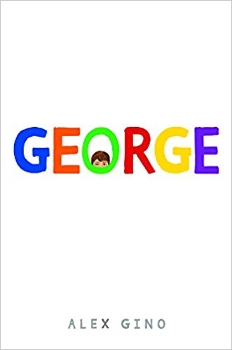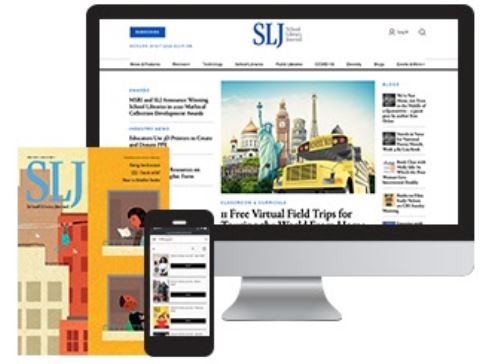Shelving Debate: To Separate or Integrate?
Librarians respond to the challenge of where to put diverse books once they have them in their collections.
Related Content
Diverse Books SurveyHOME PAGE Can Diverse
|
A diverse collection is important, a majority of librarians agree. Young people need to see themselves in books, and they need to develop empathy and understanding, to broaden their worlds, by reading about those who are different. But where do they find those books within the library?
SLJ’s Diverse Books Survey asked librarians if they “shelve any types of books with diverse content separately from your regular collections (e.g., LGBTQIA+ section, multicultural picture book section, urban/street lit section, etc.)."
Eight percent of libraries shelve at least some books with diverse content separately from other collections. It is slightly more common in public libraries, with 11 percent of public librarians who responded saying they separate content, versus seven percent of the school librarians. Libraries in urban areas are the most likely to shelve books separately. Multiple public librarians noted old policies that separated some diverse books and their intention to move those books into the general collection soon.
In schools, respondents said that much of the time, the separation occurs for curricular reasons. For example, classes study Indigenous cultures, and all of the related books are put in one section to make it easier for students to find what they need for homework and projects.
Public and school librarians reported created a specific area for foreign language or bilingual books.
“I have a special section for the fiction in another language. Due to shelving constraints, it makes the most sense,” Melissa McBride of Southold Elementary Library in Patchogue, NY, wrote. “I do have a problem with students feeling ‘other’ by having to go to that shelf, but until a better solution presents itself it is what we are working with.”

Shelving separately might make it easier for students and patrons to find those books, but the “othering” creates a problem. Kim Parker, assistant director of teacher training at Shady Hill School, a private K–8 school in Cambridge, MA, says librarians need to find a better way.
“I wonder why they can’t be in both places?” Parker says. “If we’re segregating in libraries, we’re saying you can be here, but you can’t be there.”
Young people use libraries differently than adults, she adds, and librarians must figure out where to get the “most bang for the buck.”
“I think that means putting [diverse books] everywhere,” says Parker. “Maybe that’s text pairing, maybe it’s thinking differently how we shelve books, but access needs to change.”
 Other than foreign language or bilingual books, those that are separated most often according to the survey respondents are LGBTQIA and urban fiction/street lit.
Other than foreign language or bilingual books, those that are separated most often according to the survey respondents are LGBTQIA and urban fiction/street lit.
“I have separate shelves and labels for LGBTQIA, Realistic, Sports, etc.,” wrote Jo Patrick of Fulmore Middle School in Austin. “The LGBTQIA shelf gets a lot of circulation, and I think the students find having them in one place convenient. I haven't had any requests to discontinue this practice yet.”
One high school librarian said she separates LGBTQIA books, because they have only been there the last couple of years since she started the job, and she wants students to know these books are now part of the collection.
“As there are more books that just have LGBTQ characters rather than being ABOUT LGBTQ characters then I will stop shelving them separately,” she wrote. “My gay students very much want gay characters but are tired of stories about coming out and about the struggles of being gay.”
In some cases, it is not just a matter of going to a different set of shelves.
“LGBTQIA books are kept behind the circulation desk so that students who are interested in checking them out have parental consent,” wrote Ann Heyl, librarian at Bridgetown Middle School in Cincinnati, OH.
Another middle school librarian noted that she doesn’t separate the LGBTQIA books so that she can “do my best to provide a non-judgmental environment for ALL of our students to find a book of their liking, without getting sideways glances from their peers.”
Concerns about students not wanting to be seen going to the special section, being judged, or revealing something about themselves they aren’t ready to, can keep a librarian from separating books with certain characters and themes.
“LGBTQIA literature has a colored sticker that is known to students but not widely broadcast to avoid outing people,” worte Kimberly Brosan of Williamsport (PA) Area High School.
Others are more worried about parental complaints than young people dealing with reaction from their peers.
“We shelve most of these books in the Parenting Section,” wrote public librarian Donna Harvey of the Rye (NY) Free Reading Room. “We feel that many times these books might generate additional questions or conversations that parents might want to have with their children. Many parents do not want their children exposed to certain types of information too early and because most of the material I purchase is in picture book format, I feel it is best shelved in the Parenting Section.”
 |
Urban fiction and African American authors were the other diverse books category cited most often for being shelved separately. While some librarians problematically appeared to consider the two synonymous, a few spoke of making the effort to keep young people from making that erroneous assumption.
“Right now African American, but discussion about changing that and only putting Urban/Street lit in a separate section so more readers are exposed to the authors who are in African American currently but who write non-urban lit,” wrote one public librarian.
Another, after specifying the genres used to shelve titles in her public library system, made a point to write, “Note that we do NOT separate all books with African-American characters in urban settings into the Urban section, only those books that actually have urban fiction genre characteristics.”
Often, books that fall into the “diverse” category will be spotlighted in displays. But some believe this doesn’t make the books “special” but instead says the books—and by connection the people they represent—don’t belong with the rest of the collection, a parallel to shelving titles separately.
“If they have to continually ask for displays or they continually have to go to sections, what does that say? Is it their space, or are they just visiting?” says Parker. “Very often we’re quick to say what’s wrong with kids as opposed to what’s going on in structures and the systems that promote this white supremacist system of librarianship.”

Add Comment :-
RELATED
The job outlook in 2030: Librarians will be in demand
The job outlook in 2030: Librarians will be in demand
ALREADY A SUBSCRIBER? LOG IN
We are currently offering this content for free. Sign up now to activate your personal profile, where you can save articles for future viewing






